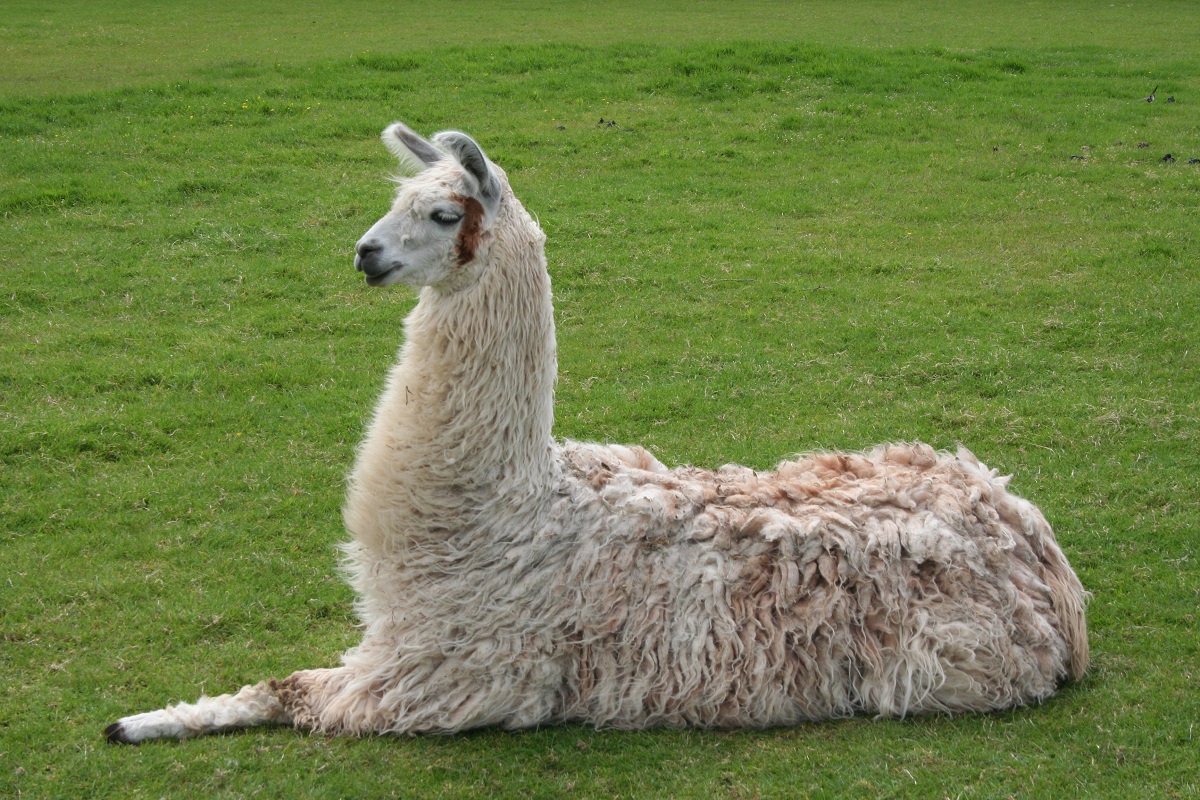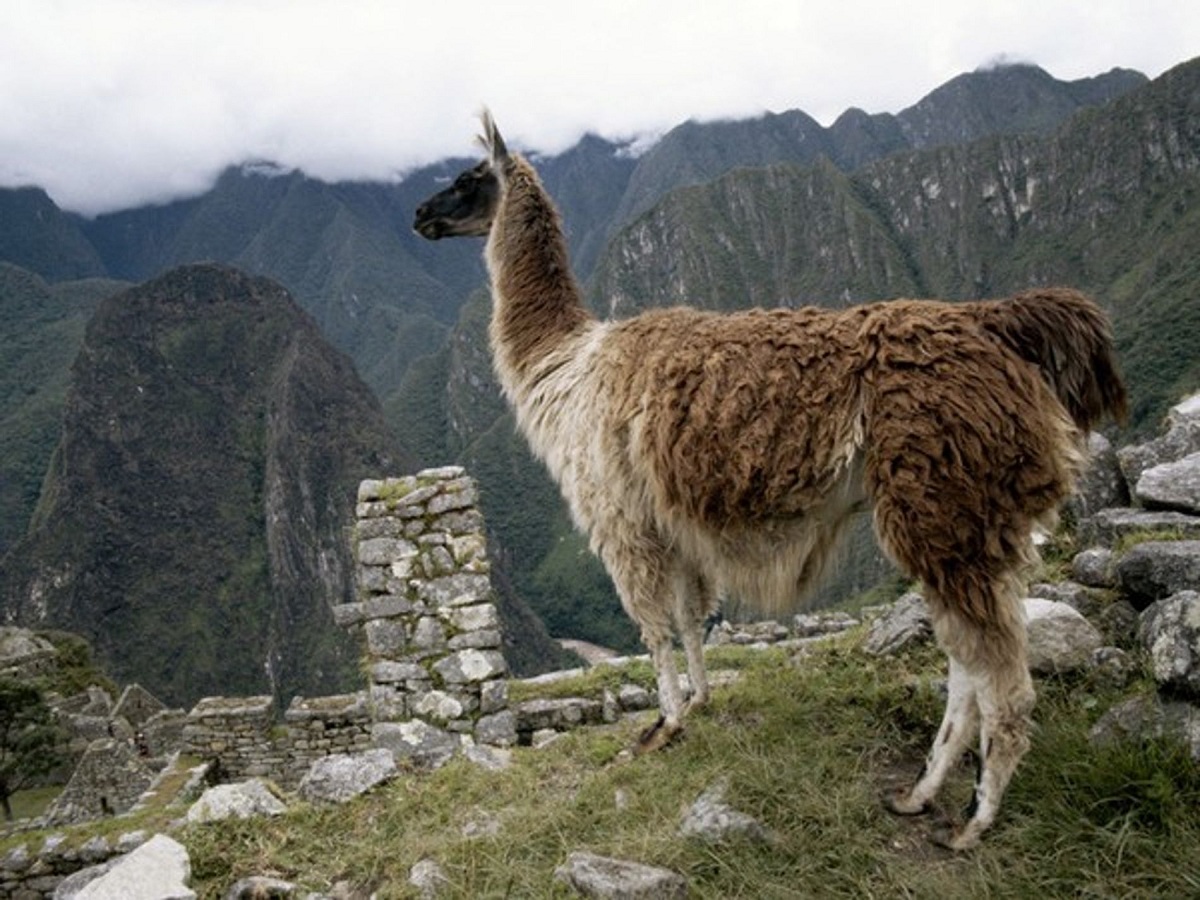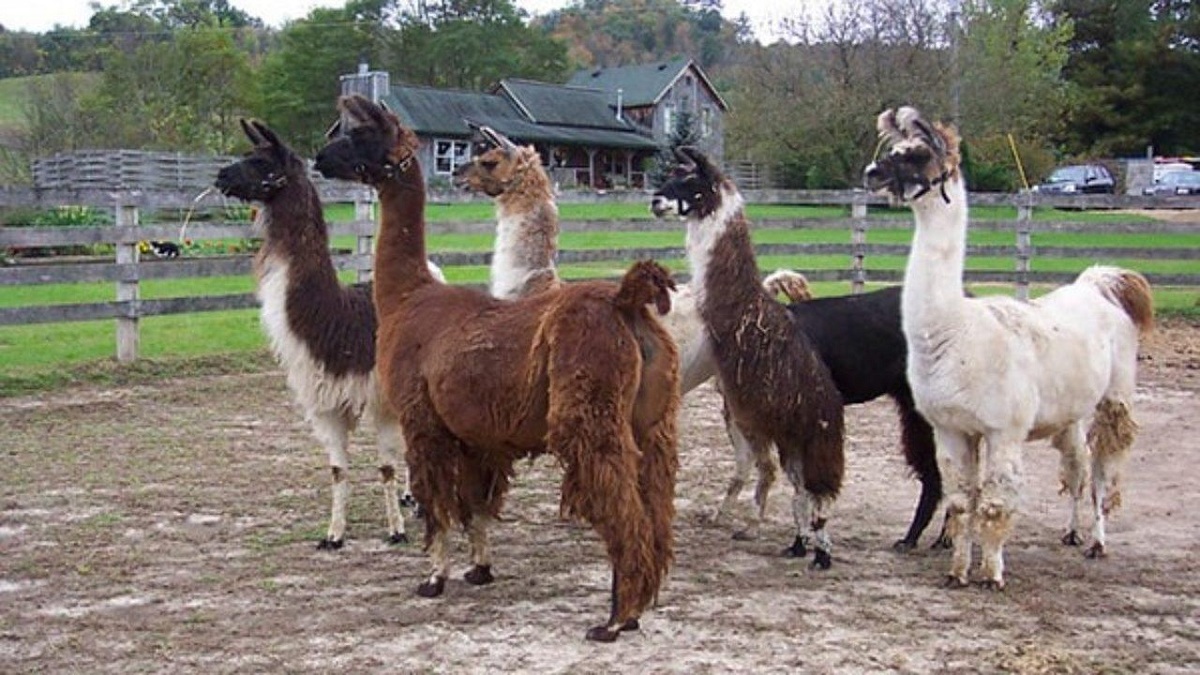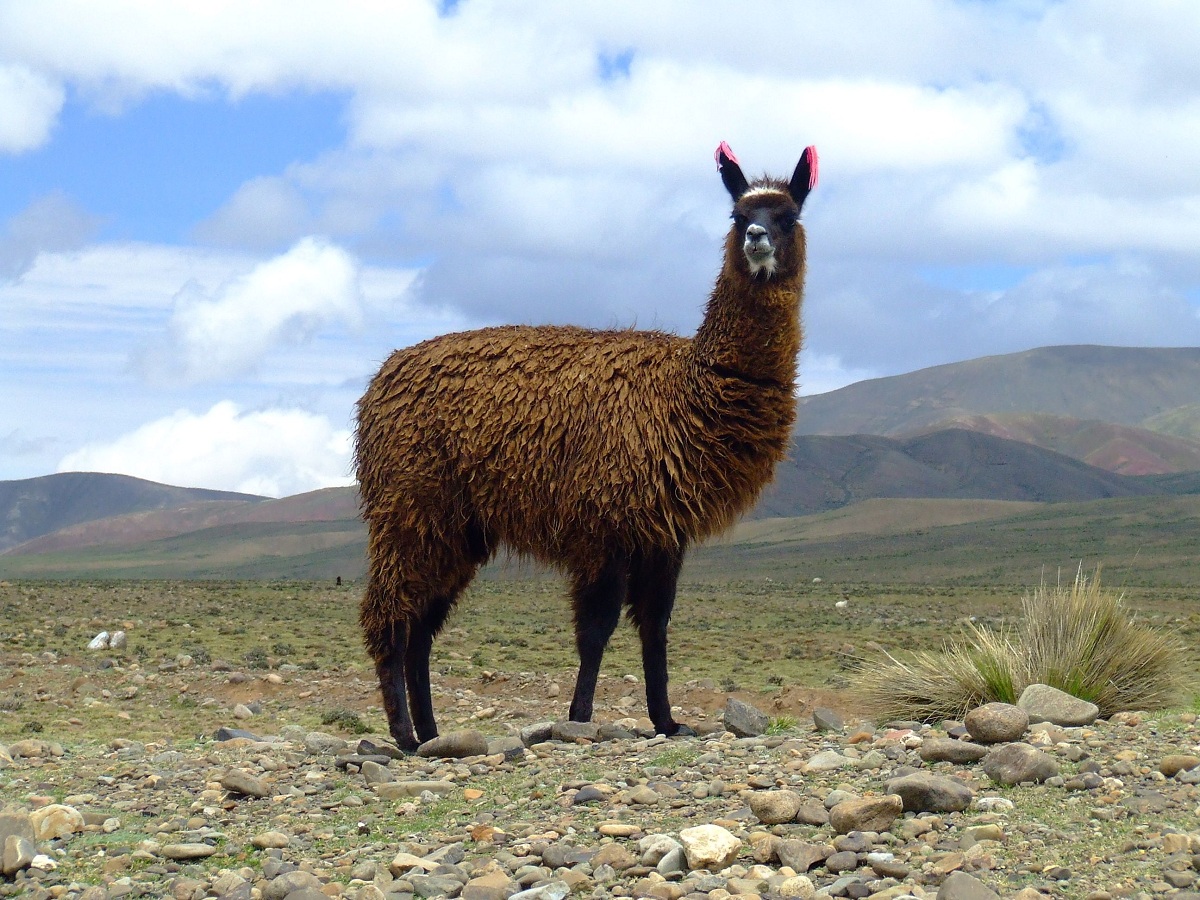
Surely you've ever heard of what you've seen in videos of a call. It is a domestic animal that plays an important role in regional economies. It is a species that has lived for more than a thousand years in the Altiplano region of the Andes Mountains. This animal belongs to the Camelidae family heard from the guanaco adaptations. Before the Spanish came to America, the llama would be used to produce meat, wool and was used as a pack animal.
In this article we are going to tell you all the characteristics, habitat, feeding and reproduction of the llama.
Key features

This animal belongs to the group of artiodactyl mammals. This means that it has an even number of toes on its paws. Among all the toes they have on their legs, they support at least 2 to be able to walk. It has 4 legs and has 2 toes on each of them. In these of two they have pads that serve to cushion the weight during their march. They also use them to be able to move through the steep terrain that they are frequently found in their natural habitat.
Not much is known about the development and evolution of the call but it is known that it is an artificial creation of the human being obtained from guanaco. Its scientific name is Lama glama. It has a fairly thin and long neck and is usually between 1.70 and 1.80 meters tall.. Depending on the rhythm of life and whether it is male or female, the weight usually ranges between 130 and 200 kg.
Normally they tend to look quite funny since they have a body covered by a long fur that can be of various colors such as beige, white, brown and yellow. What makes this animal funnier is its narrow head with rounded ears and a snout where you can see how its lower incisors protrude. Its teeth are made up of 32 teeth.
You also have a large amount of hemoglobin in your blood, and your red blood cells are oval in shape. This type of blood has been produced through the passage of time and evolution. And it is that in order to survive in these habitats at high altitudes and with steep terrain, the species has had to adapt to the lack of oxygen.
Habitat and range of the llama

As we mentioned at the beginning of the article, it is an animal that develops in the mountainous areas of the Andes mountain range. In this area is mainly found all the abundance of llamas that extend around the Altiplano. This entire region occupied from Bolivia and Peru to northern Argentina. Since it is a domestic animal, it is rare to see llamas in the wild. The same happens with other domestic animals such as horses, cows, dogs and cats.
Since this animal has become quite famous since ancient times, it has had great economic importance for many countries. Such this economic importance has made it possible to increase its range and can be found today in the United States, some countries in Europe and Australia. Before the Spanish conquest of America the call had a habitat within the Andean communities. It was considered a sacrificial animal in various rituals for the gods and it was also used as cargo transport.
When the Spaniards arrived on the American continent, they incorporated the horse into the civilizations of this continent as an animal for displacement of cargo. This caused the flame to take a back seat. At present, the llama is a very important source of resources for many populations that inhabited the Altiplano de los Andes. Two primary products of economic importance can be obtained from them, such as they are the fibers for making textiles and their meat. Along with these economic benefits of the llama, its products are also obtained, such as leather and manure, which are also commercialized.
It should be borne in mind that the so-called meat is rich in protein and has a low cholesterol content. What is most sought after in this meat is that it is lean. Currently there are an estimated 3 million llama specimens and most of them located in South America. It is not considered an endangered species at all since it has its eye on humans.
Food
This animal has a herbivorous diet. Their diet is based mainly on lichens, shrubs and any type of grass that grows in the heights. It must be taken into account that these ecosystems have fewer plants due to oxygen shortages and harsher conditions. They are ruminant animals and are capable of regurgitating their food. Its digestion process and it is quite long since the food must pass through its 3 stomachs.
Generally, the call does not drink water directly, but incorporates it into their body through the food they eat. When you see a water fountain it is capable of drinking up to 3 liters in one go to store as much water as possible. Again we emphasize the difficulty that this animal has to find water in these ecosystems.
Flame reproduction
These animals reach their sexual maturity when they are one year old. Males have to wait to reach 3 years of life. Another reason it has become such a famous animal is because it is so sociable. For your reproduction, each male surrounds himself with 6 females with whom he mates. One of the characteristics for which the male stands out with respect to the female is that they are very territorial. These males will defend their entire harem in any way to prevent intrusion from another male.
Normally, the mating and breeding season takes place in late summer and early fall. Copulation takes place differently from other quadruped animals. It is done while both are lying on the floor. Gestation lasts about 350 days in which the female gives birth to a single calf weighing around 10 kg.. The llama has a very short tongue and at birth its young is unable to lick it. Then, the caress imitating very particular sounds that makes you feel protection. The breastfeeding period lasts for four months.
I hope that with this information you can learn more about the llama.
